Resolven & District Amateur Operatic Society – The Late 50’s
Part 3
1955 – 1959
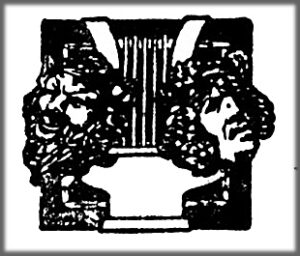
The time before the start of 1955 proved a sad and difficult time for R&DAOS when they lost two valuable members of the same Family, Blodwen (Blod) Davies a leading soloist and a very popular lady in the community and her brother W. Evans Davies, Committee member and Wardrobe Master, both who were very active and had been faithful founder members of the Society since 1926.
As reported previously in our second R&DAOS publication, practices for cast and chorus in 1954 were well advanced and although Mr Glyn Davies recovered quickly after being hospitalised, the production of ‘Merrie England’ had to be postponed until May 1955.
For the 1955 performance another Producer had to be found so Joseph ap Morgan, from Gwaun-Cae-Gurwen agreed to produce this new show for the Society.
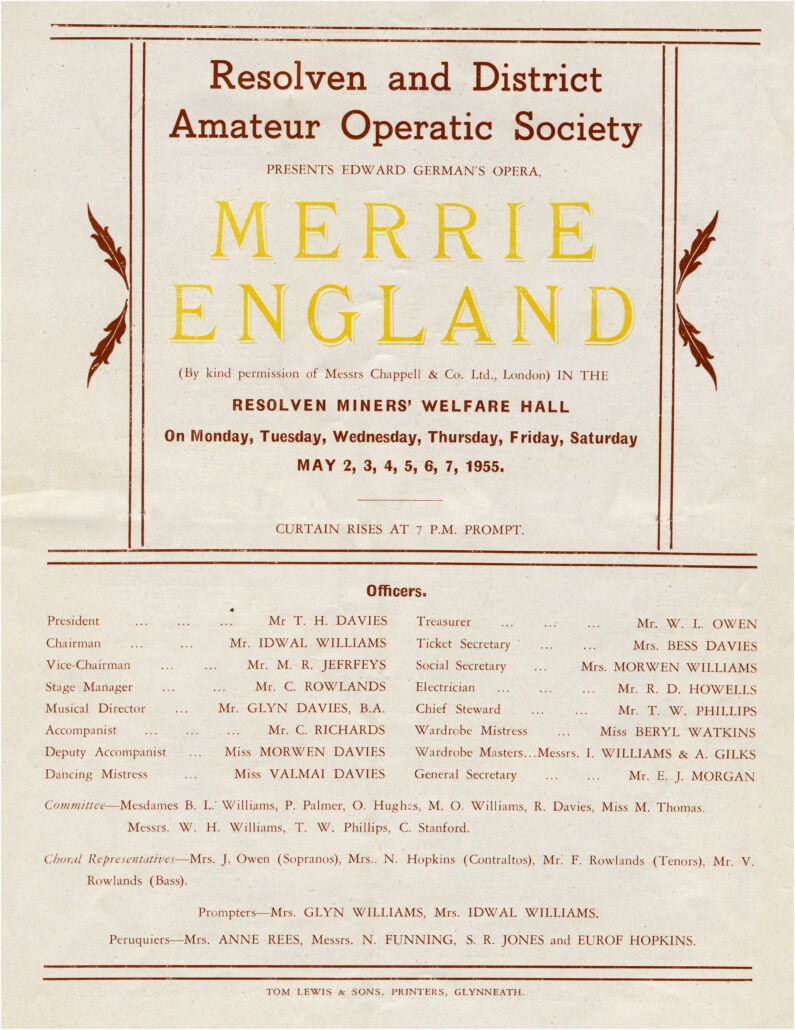
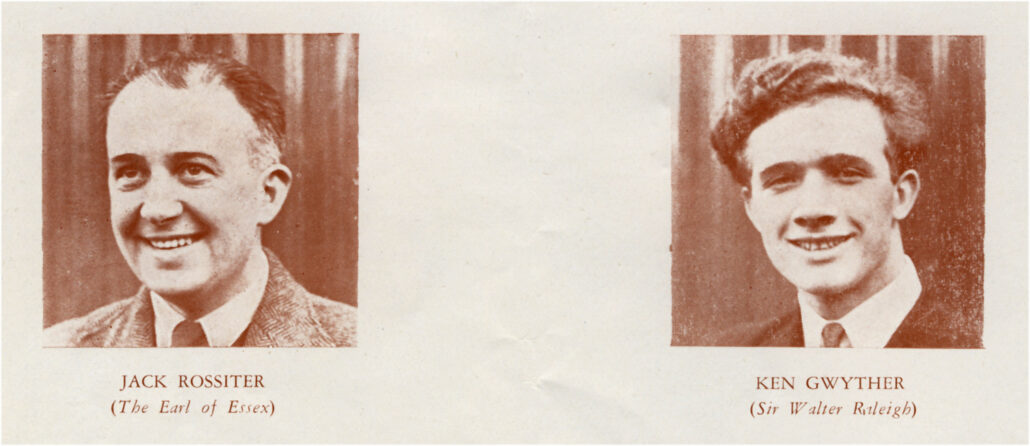
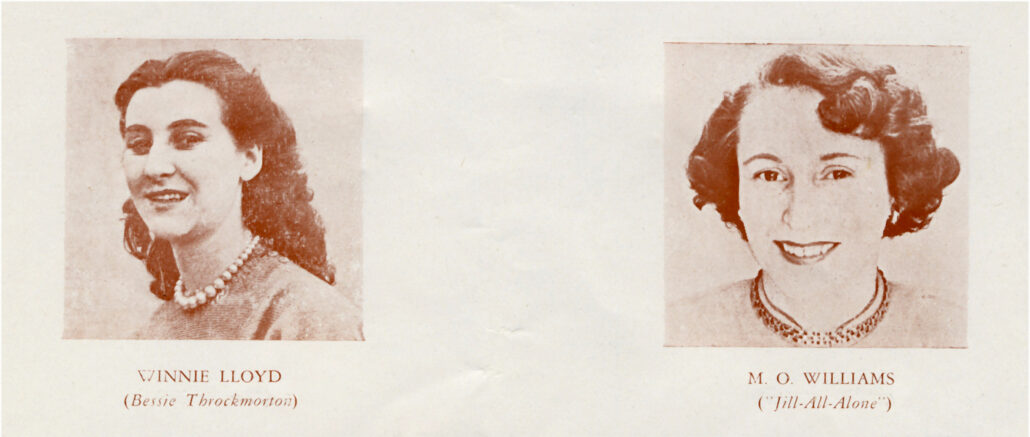
…………………………………………………….
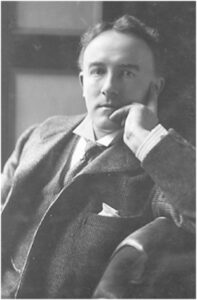
Merrie England, is a patriotic story of Love and Rivalry, and was first performed in London in 1902. The story is set during the reign of Elizabeth I and is an English Light Comic Opera by Edward German. An English composer of Welsh descent best remembered as a successor to Mr Arthur Sullivan in the field of Comic Opera, with Merrie England being one of his most famous, and still performed by Amateur Societies. He was also a prolific writer of Symphonies and Orchestral suites of which his Welsh Rhapsody is best known. Interestingly, his first name was German which was an Anglicised form of the Welsh name Garmon. (A Welsh word for ‘hermit’). At the age of 18 he entered the Royal Academy of Music where he changed his name to Edward German. He never Married and died in 1936.
………………………………………………………

The show ‘Merrie England’ was a big challenge for the Society as not only was it new to the Society it presented quite a few problems due to there being seventeen main characters, besides a large chorus, eight dancers and two handmaidens.
Although the stage size was adequate for the number of artistes, the back stage facilities were extremely limited with only two dressing rooms, (the size of a normal ‘front room’ in a village house) – one for men and one for women. There was a small toilet in the corner of each room.
The perruquiers (make-up artistes) also worked their magic to create stage characters in the same small rooms, which must have been a difficult and uncomfortable job in that environment. Make-up was required and necessary because of the powerful lighting used at that time.
The work that goes on behind the scenes to produce and prepare any show is sometimes overlooked and it is interesting to note that in the Minutes of a General Meeting in 1955 it is written that-.
“We must not forget the ‘Back Room boys’ under the able management of Mr C Rowlands, without which no opera could be performed unless we have such personnel. Our congratulations we readily extend to Mr Rowlands and his assistants.”
“Also Excellent work has again been carried out by our Social Committee, and Mrs Idwal Williams, the Social Secretary, and her Committee are to be congratulated too.”
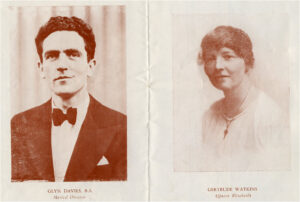

One of the highlights of the show was the colourful dance routines. There were eight dancers with Miss Valmai Davies leading the dancers. She was well respected and the Society were fortunate to have the services of such an accomplished young dancing teacher. Her contribution to the show was clearly part of its overall success as it was a show that was very different from a Gilbert & Sullivan Operetta and the Composer Edward German was lesser known but the production was reported as beingl well received and enjoyed by the audiences.
.
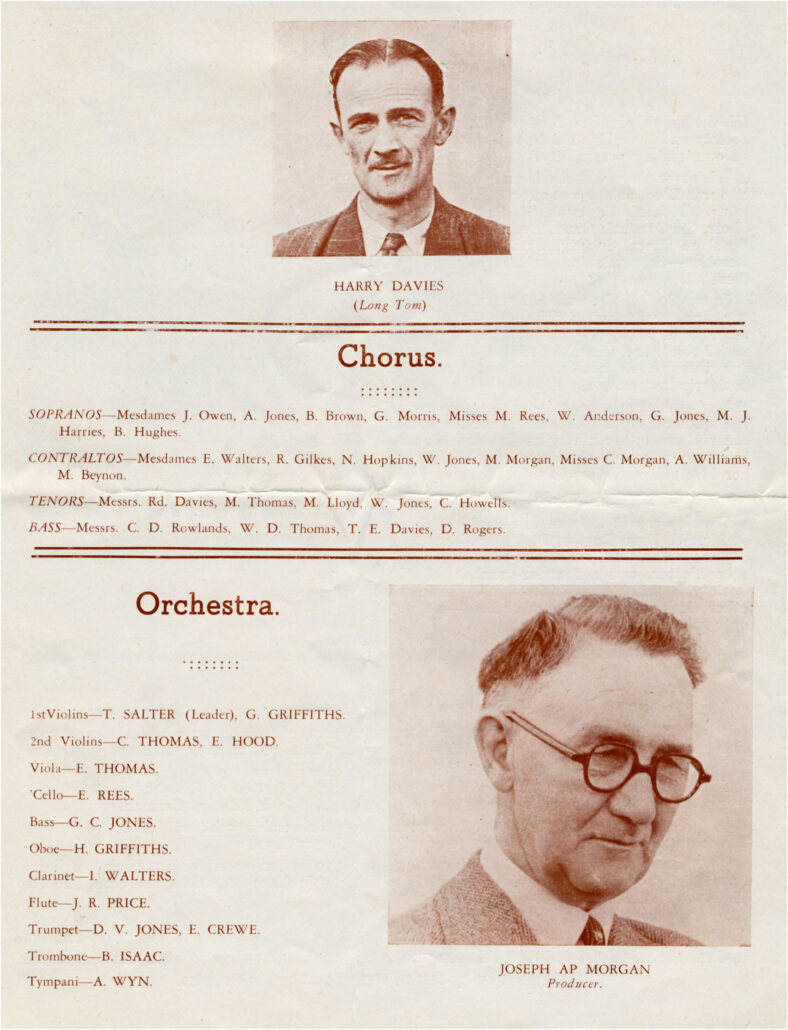
~
In 1956 a return was made to the Gilbert and Sullivan shows for the next production, but this time two operettas were chosen, ‘Trial by Jury’ and ‘HMS Pinafore’. These two shows are often performed together as they are shorter in length from other operettas. Mr Richard Jones, Penrhiwceiber returned to the Society and was able once again to produce the show. The full ‘Opera Week’ returned with the performance dates of April 30th – 5th May 1956.
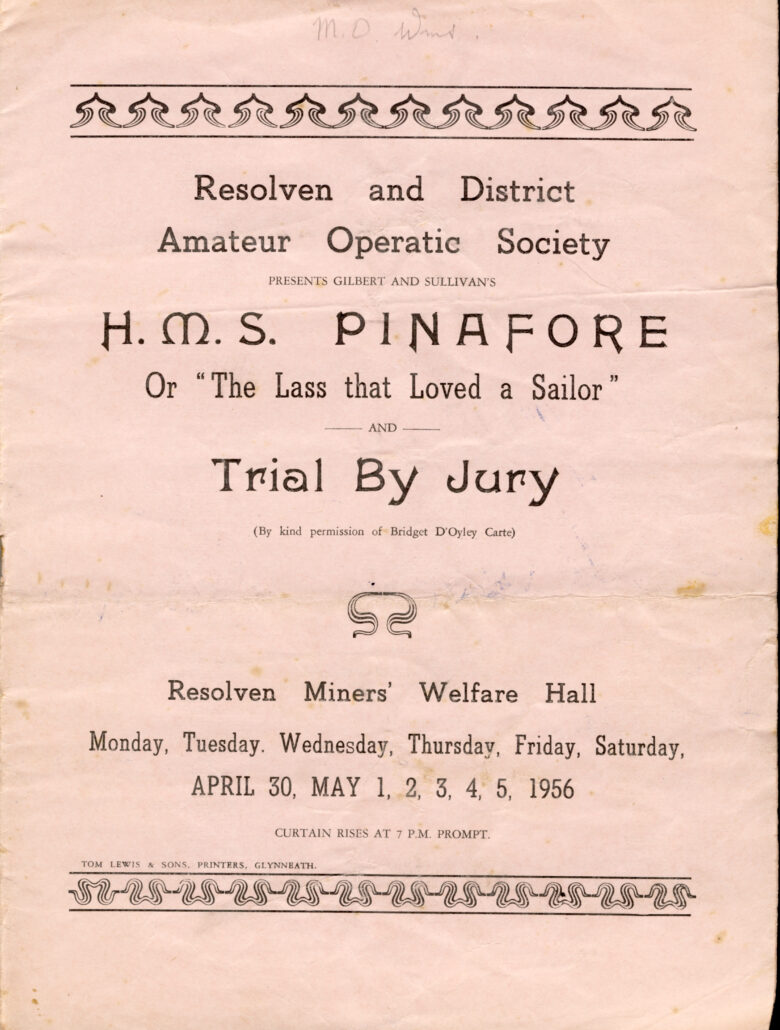
A feature of the production of ‘Trial by Jury’ was that the chorus improvised with their own costumes for the scene of the general public in the trial. This proved effective on stage and meant, of course, that it was also an exercise in cost saving.
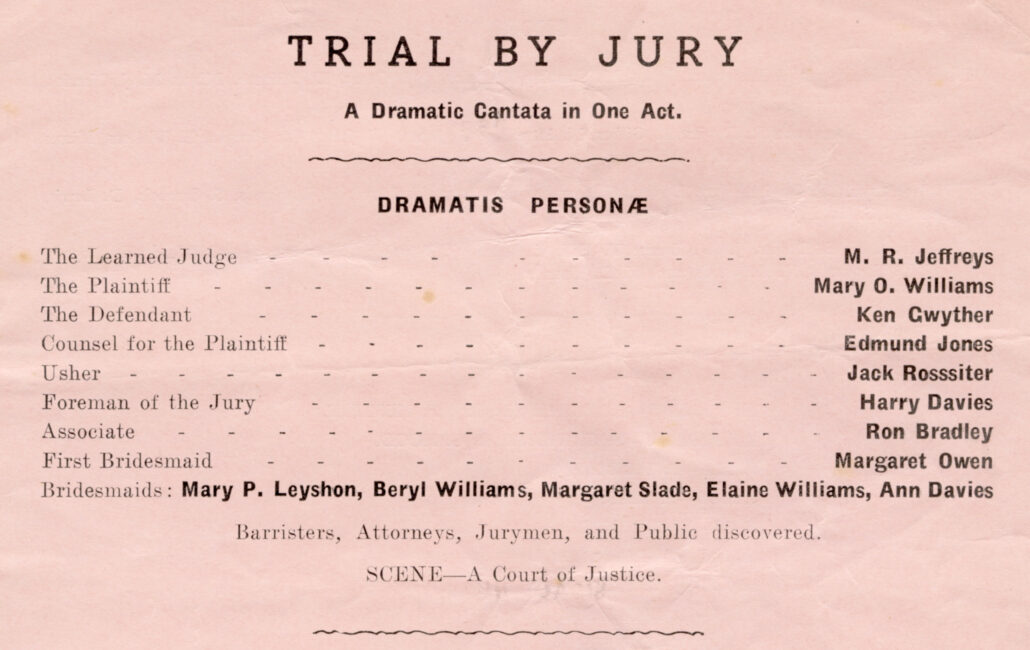
For the production of HMS Pinafore, Mr Idris Morgan who played Capt. Corcoron and Miss Megan Hopkins who played Josephine returned to the Society after some years’ absence
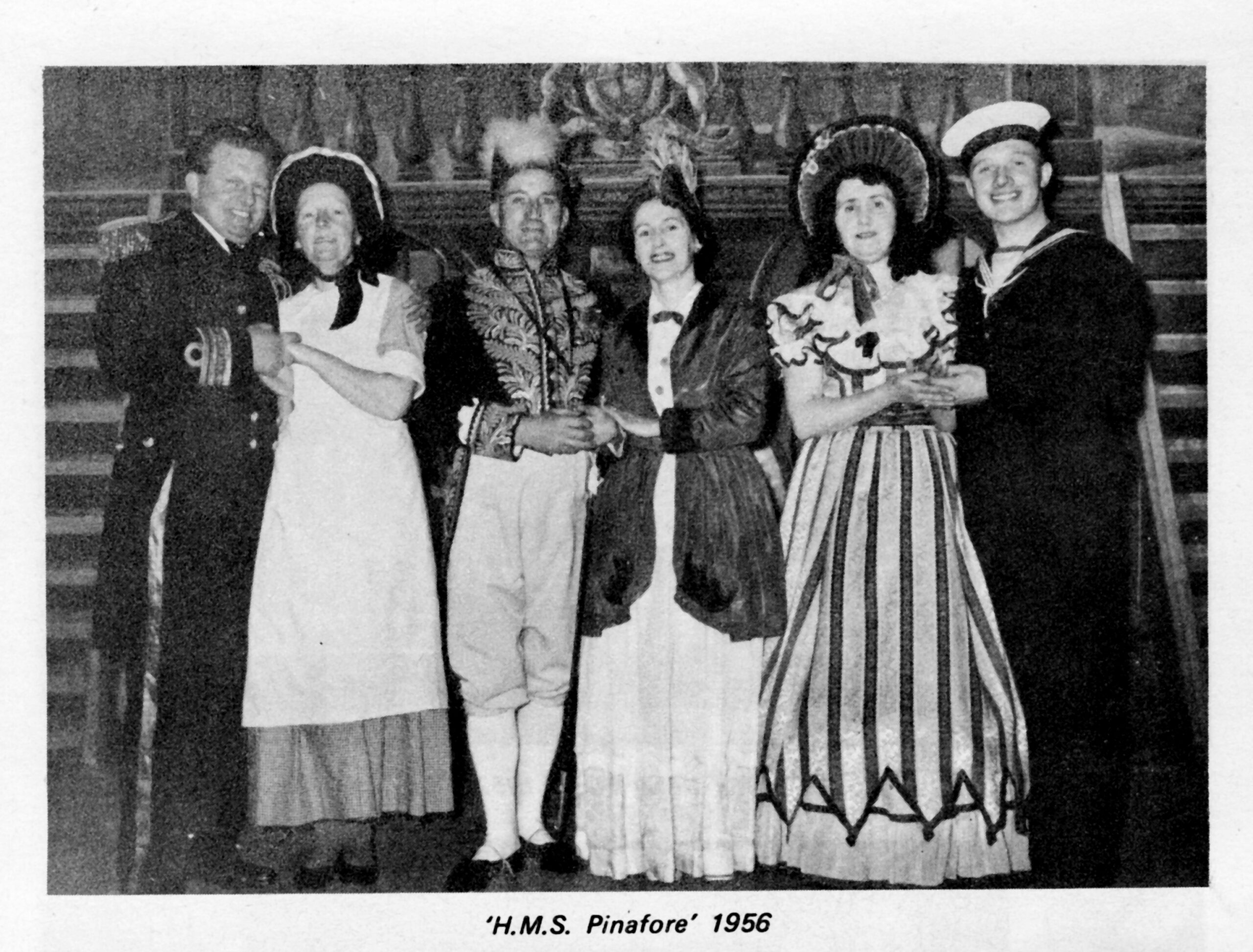
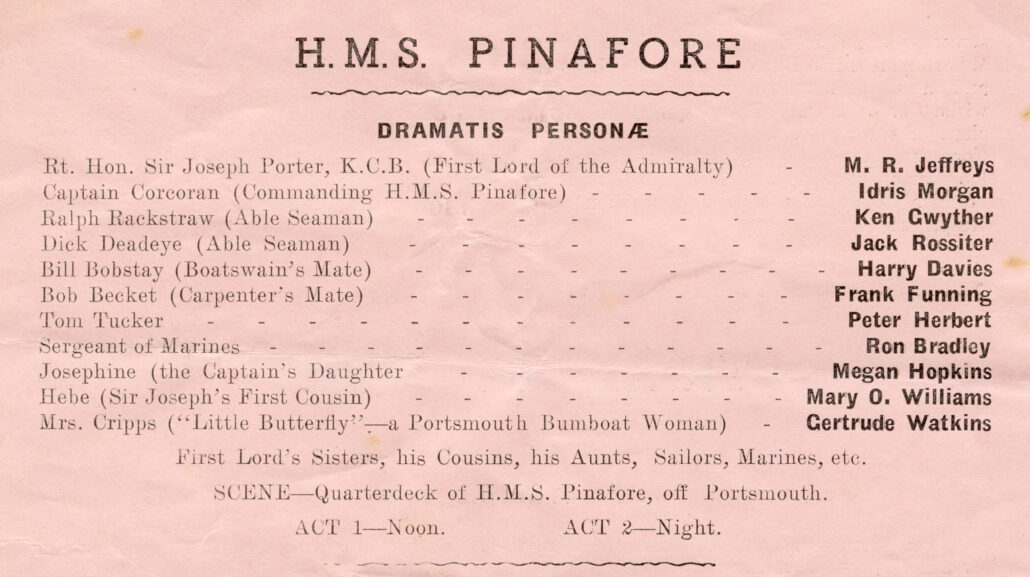
~
A short time after ‘Opera Week’ and during the summer months, a small party of 20 in number, practiced in Jerusalem Vestry and Chapel for the Madrigal Competition in the Aberdare National Eisteddfod which was being held in the first week of August 1956. They were called ‘Parti Ynysfach’ and under the direction of Mr Glyn Davies, they narrowly missed first place in the competition.

Also in 1956, Mr Idwal Williams was made Life Member for his services to the Society. He had served on the Committee from 1950 onwards and had been Wardrobe Master from 1951 to 1956 and was Chairman in 1956. Although he left the village to live in Llandeilo, he continued to take an interest in the Society and returned every year for the annual performances of the Society.
~
The Autumn saw a return to practices for the next operatic venture in 1957, the choice was ‘The Rebel Maid’ a popular light operetta by Montague F Phillips who was a British Composer.
…………………………………………………………..
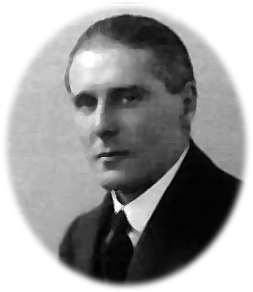
The Operetta was first performed in 1921 at the Empire in London. Mr Montague F Phillips was the Conductor for the performances, and his future wife, Clara Butterworth, a soprano of note, sang the lead role of the rebel maid. Mr Phillips was born in Tottenham in 1885 and died at the age of 83 in 1969. His wife outlived him by many years and died aged 109 in 1997.
………………………………………………………..
The producer again was Mr Richard Jones, with Mr M R Jeffreys as Deputy Producer. Unfortunately, a short time before the show Mr C Rowlands fell ill, so was unable to be Stage Manager. It was the first time he had been absent since the first show in 1927 and he was greatly missed but luckily Mr Eurof Hopkins took over the position of Stage Manager and carried out the work effectively and efficiently.
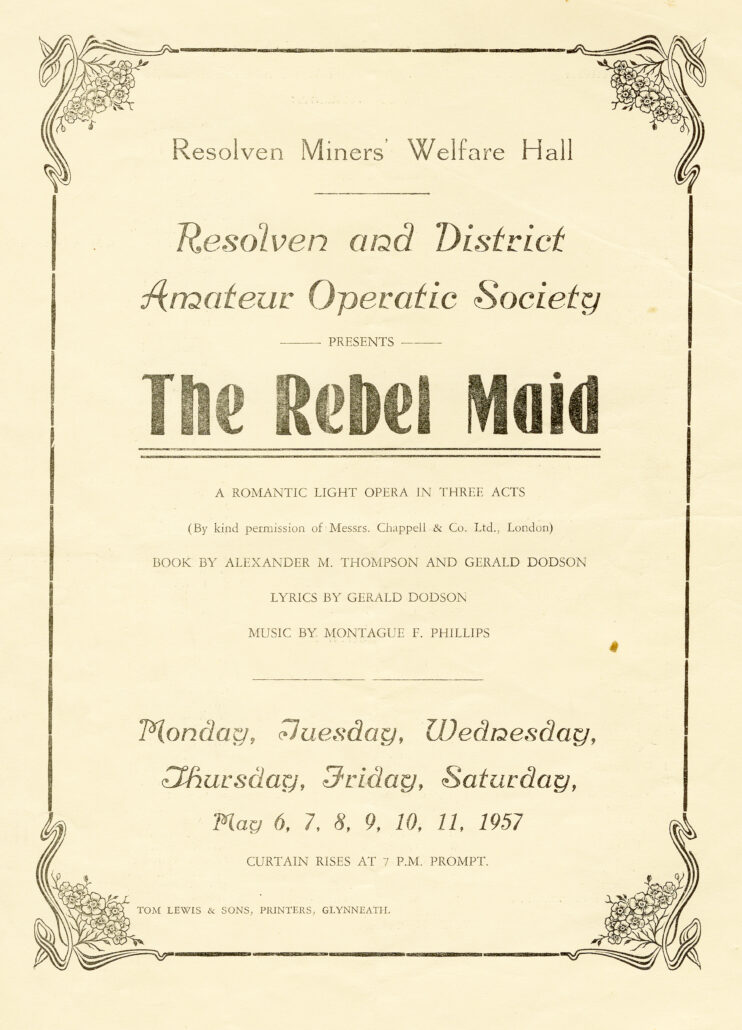
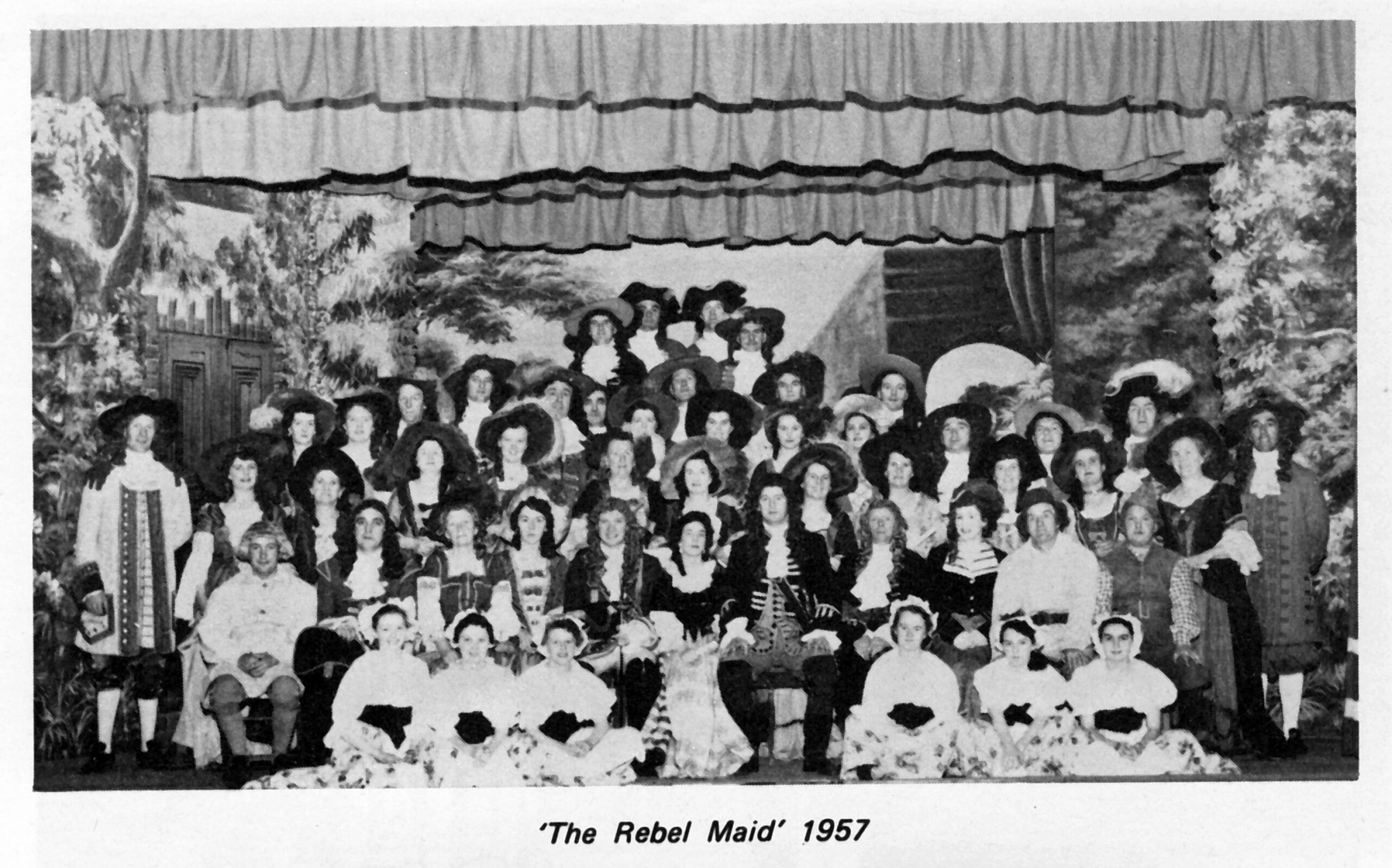
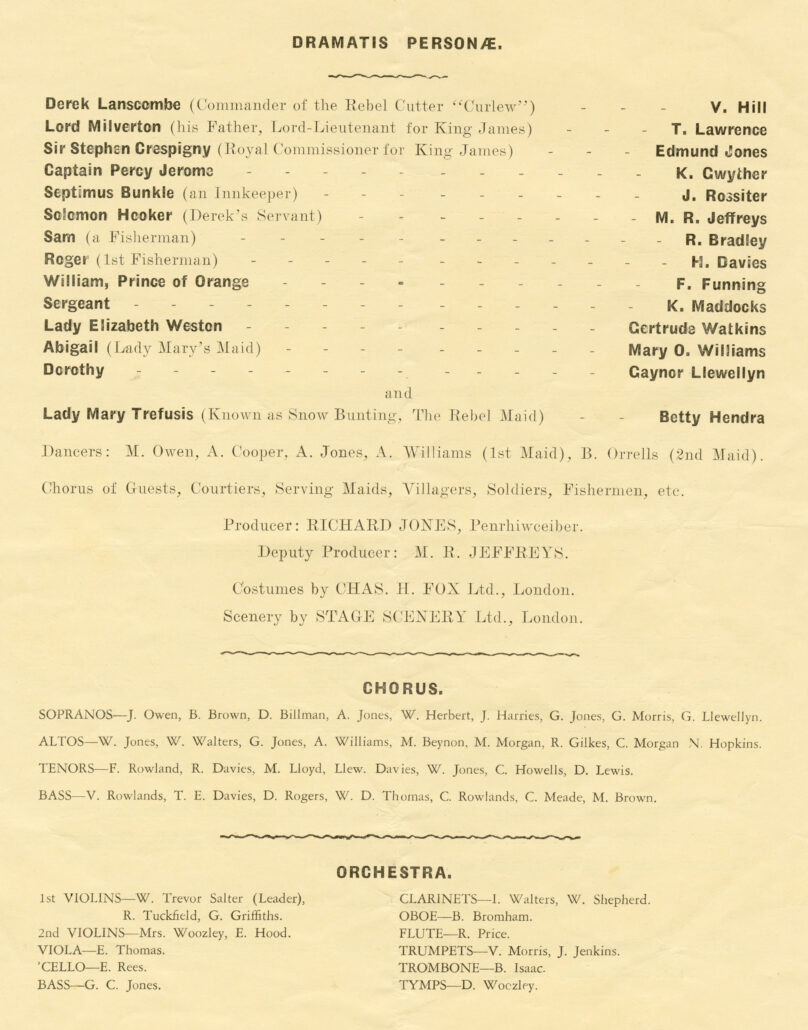
It is recorded that the show of The Rebel Maid attracted a lot of interest from other visiting Societies and the wider community due to the show being so colourful and different and not so well known.
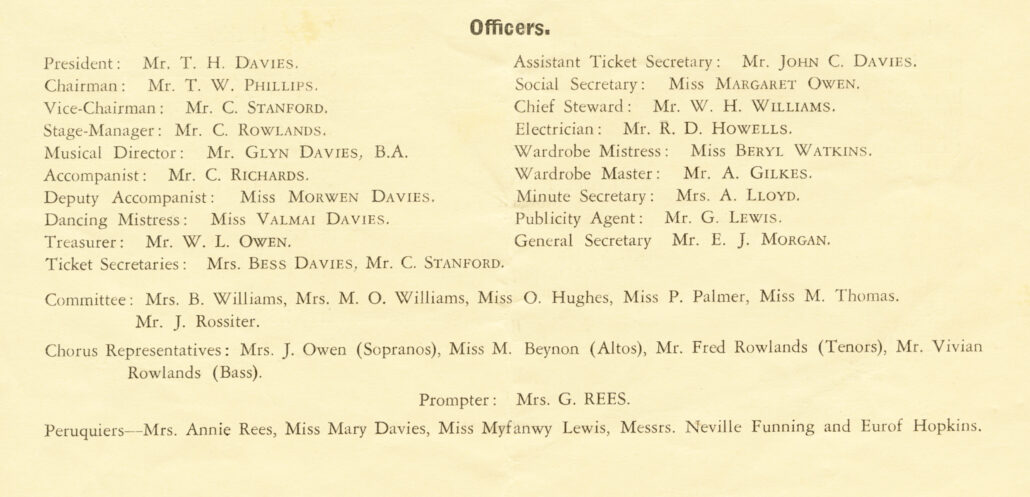

The following information shown on the programme was unusual and maybe of interest.
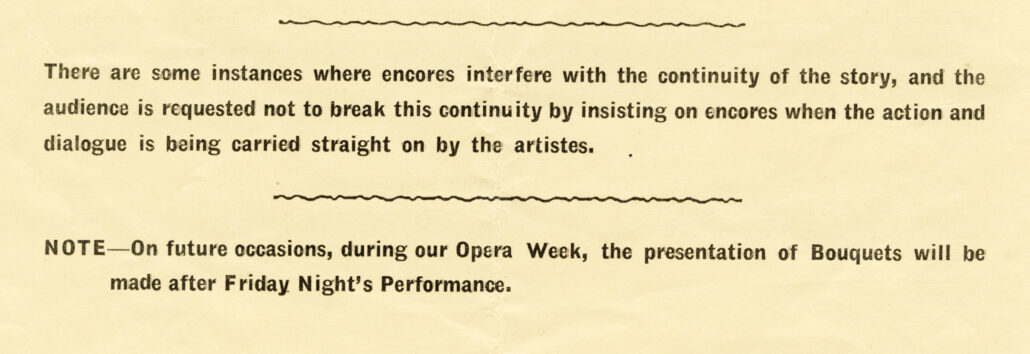
~
After the show, the Musical Director, Mr Glyn Davies suggested that the Society put on a concert in the Autumn, which would keep the members occupied while developing their voices and this would be for the whole year, and not just a few months. The idea was taken up enthusiastically by the Chorus, and for the Concert, a number of music – lovers from outside the Society as well as former Society members joined the choir. Normally for such a concert soloists would be brought in but for this performance three of the soloists were members of the Society, namely Mrs Winnie Lloyd, Soprano, Mr David Williams, Tenor and Mr John (Jack) Rossiter, Bass with Miss Gwyneth Price of Neath, Contralto.
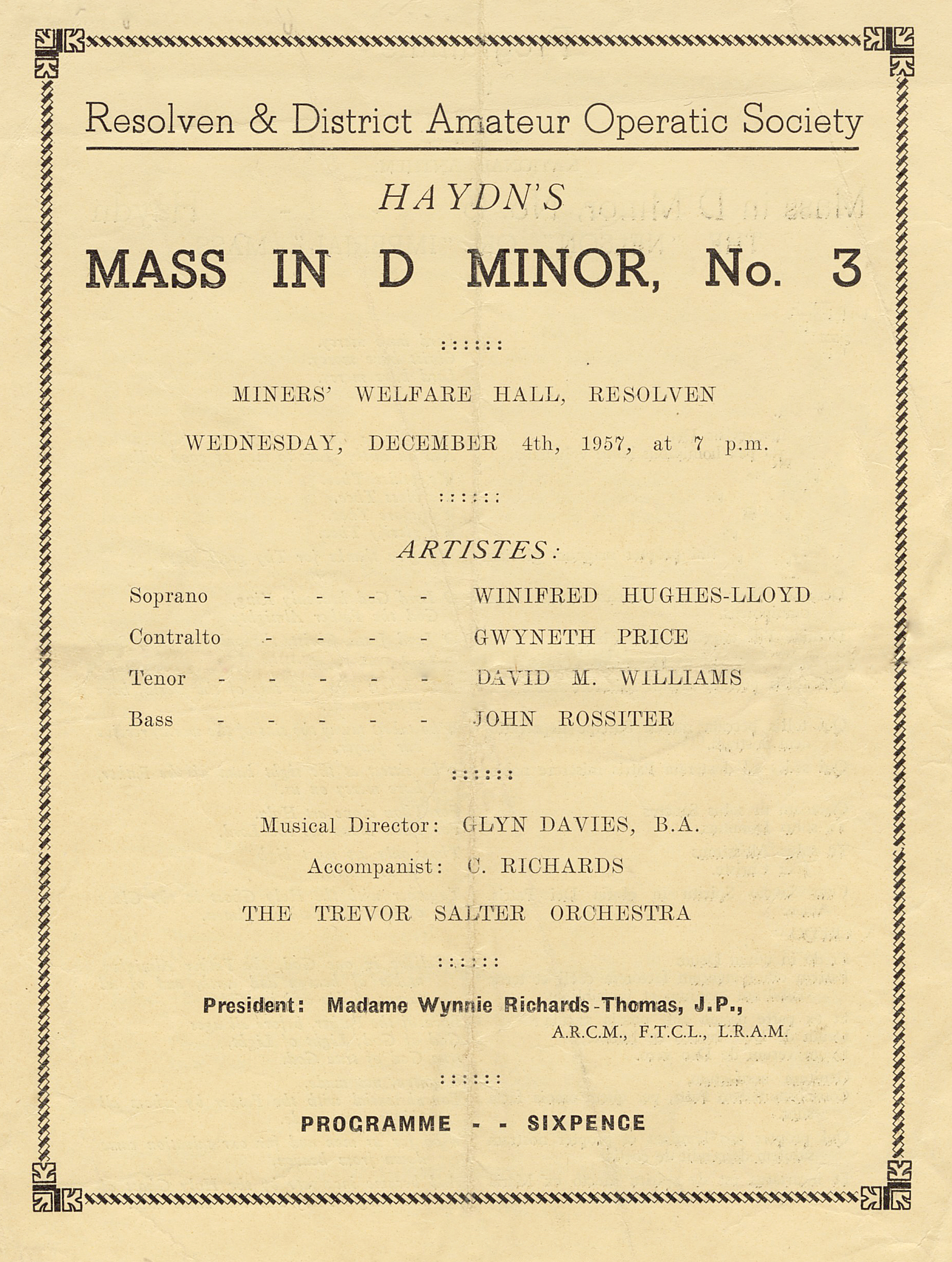
.
.
The concert was a huge success for the Society and community and was widely reported as such in the press. Therefore, requests were received for further performances at different locations. The first being St Anne’s Church Tonna with Mrs Eileen Gethin-Jones accompanying on the organ. The next performance was the following year in the Eisteddfod Marquee, Glynneath on Sunday evening July 6th 1958. The accompanist then was Mrs Olive Williams. Unfortunately, for varying reasons, there were only seven sopranos nevertheless, they gave a creditable performance.
.
~
For 1958 the Comedy Opera ‘Dorothy’ was chosen which was the first Opera to be Produced by Resolven’s own Merfyn Jeffreys. This was no mean achievement as he also took one of the leading roles in the Opera. The dates of the show were the 19-24 May 1958. This was a show that had a lot of movement and dancing routines plus a ballet sequence ably managed under the direction of the Dancing Mistress, Miss Valmai Davies
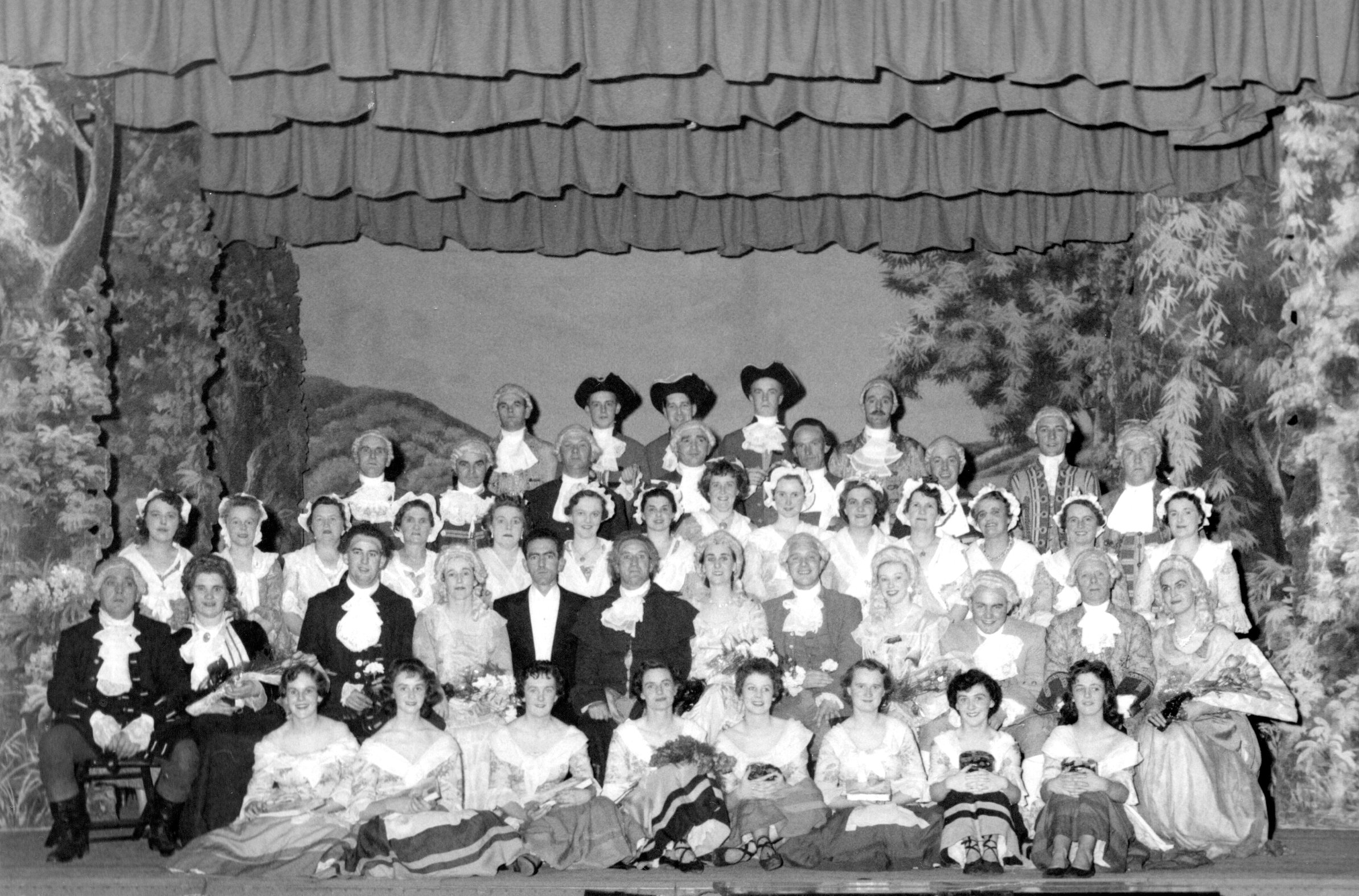

………………………………………………………….
‘Dorothy’ is a comic operetta in 3 Acts with music by Alfred Cellier and libretto by B C Stephenson. The Story is one of romance and mistaken identities with topical humour. It was first performed at the Gaiety Theatre in London in 1886. It had an initial run of 931 performances breaking the record for the longest running Musical in theatre production history and holding the record until the 1900s.
‘Dorothy’ toured and enjoyed numerous revivals in Britain until 1908 with at least five separate and simultaneous companies performing not only in the UK but also in America and Australia.
…………………………………………………………
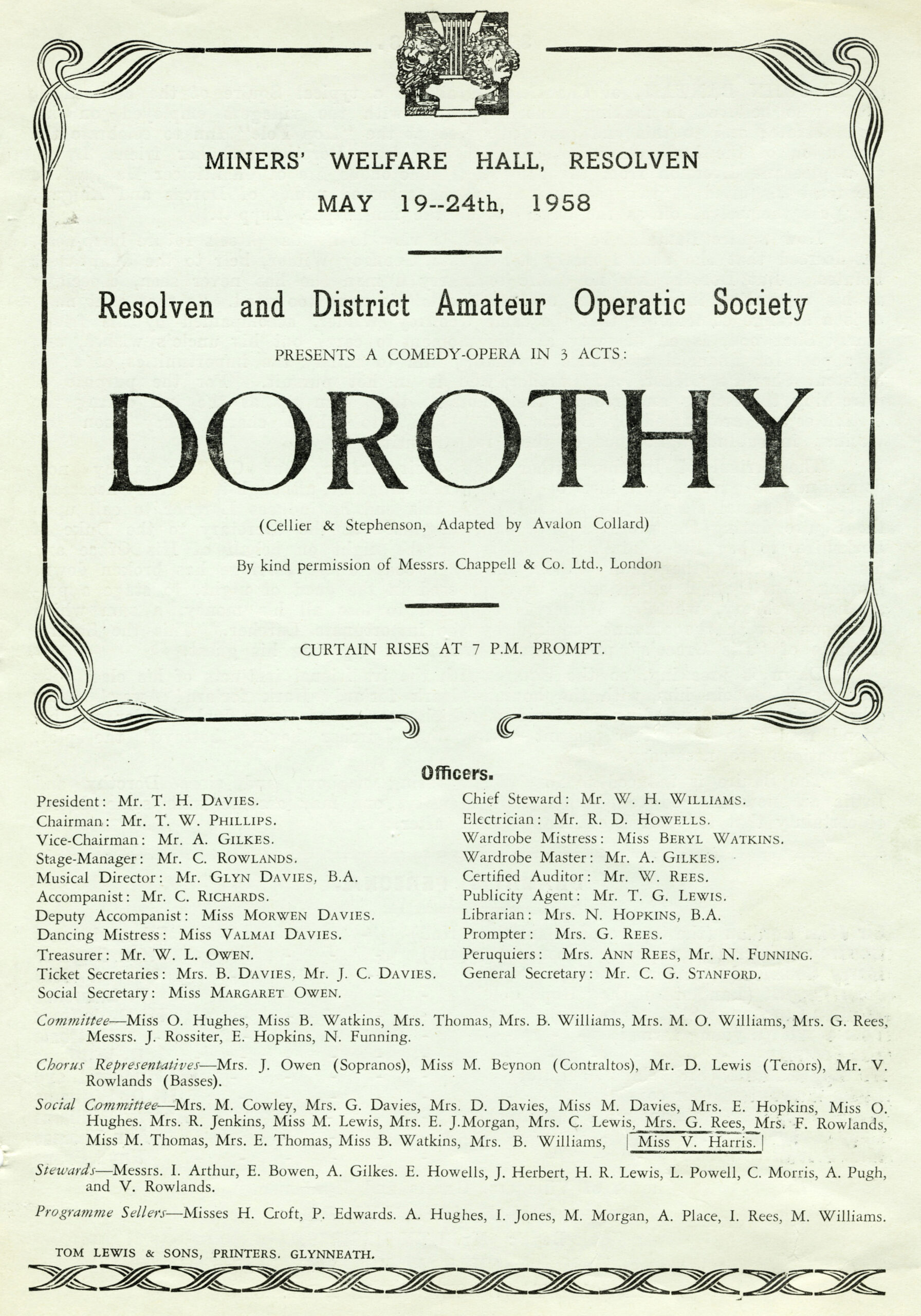
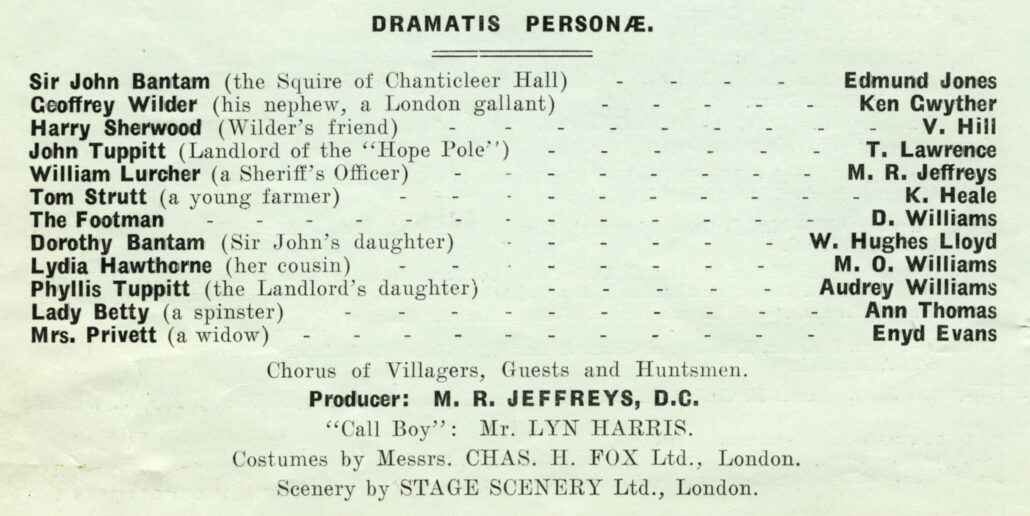
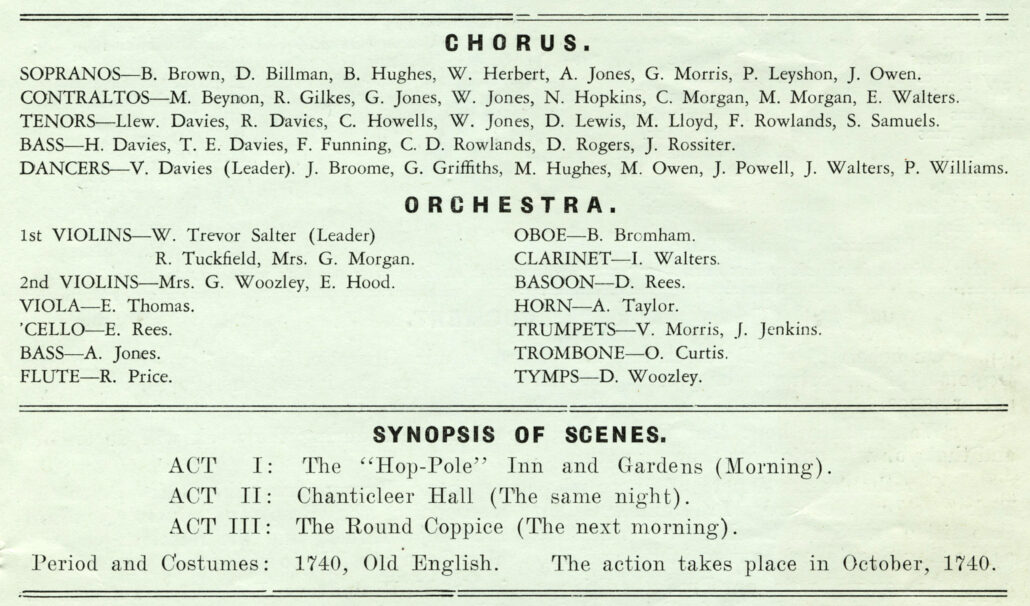
~

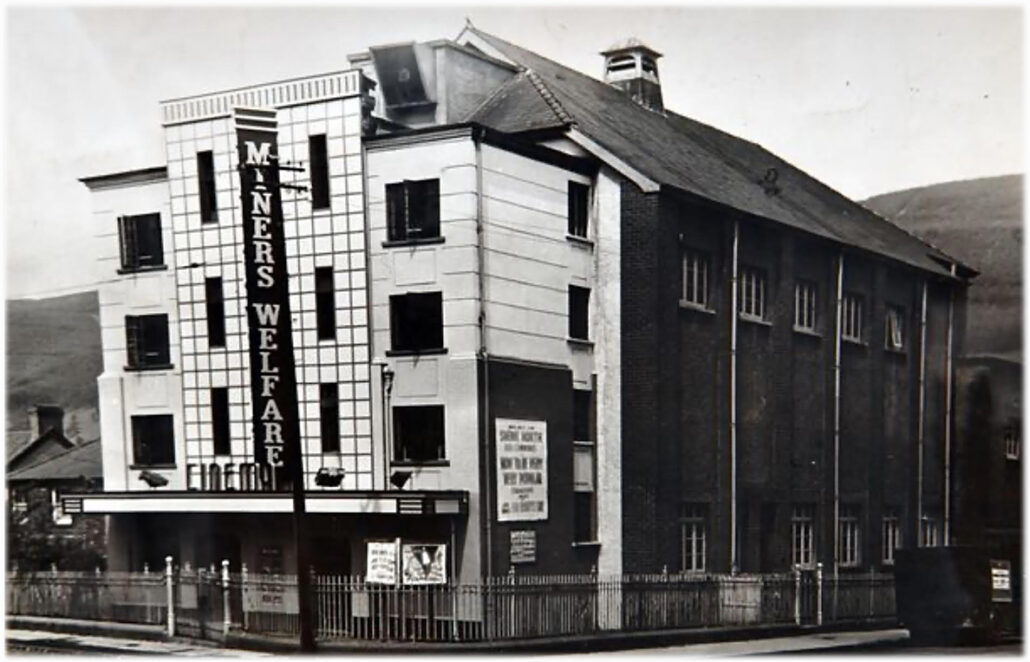
This was the beginning of a period of great activity in the Society’s history. Following the week of the Opera, the Choir embarked on another concert, Rossini’s ‘Stabat Mater’ which was rehearsed and performed at the Welfare Hall Resolven on Wednesday, December 17th, 1958. The four soloists were members of the Society. Again it was very well received by the community and press.
.
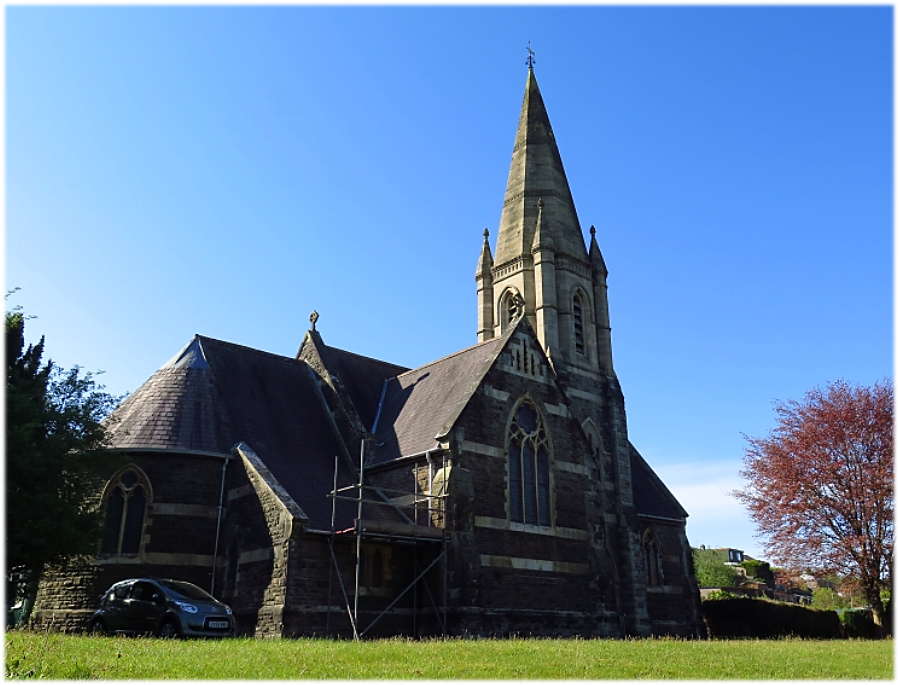
.
Another request was made from Tonna for a performance in St Anne’s Church with Mrs Eileen Gethin-Jones accompanying again.
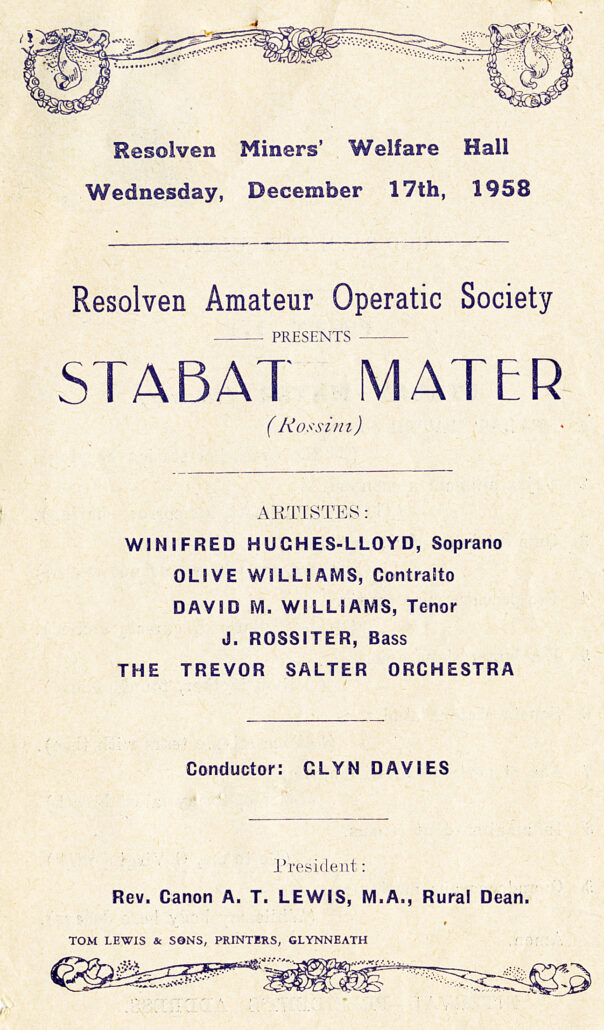
~
In 1959 there were several important decisions made. It was first decided that the 1959 Opera performance dates would be changed to November when during that year a French Comic Opera, ‘Mirette’ by Andre Messager would be staged. This presented something of a challenge for the Producer, Mr Mervyn Jeffreys as there was no producer’s marked score and libretto and no professional performance to follow or adapt. That must have been quite an obstacle to overcome.
Mr Ernest H Davies became Secretary while Mrs Jean Hill undertook the work of the Social Secretary.
The second decision made was that the venue for rehearsals would change. Permission had been given by the Glamorgan Education Committee for the Society to use the Resolven School Hall. The Society was fortunate to continue to rehearse there for many years.
Due to rising costs the Society reverted to four performances for ‘Mirette’.
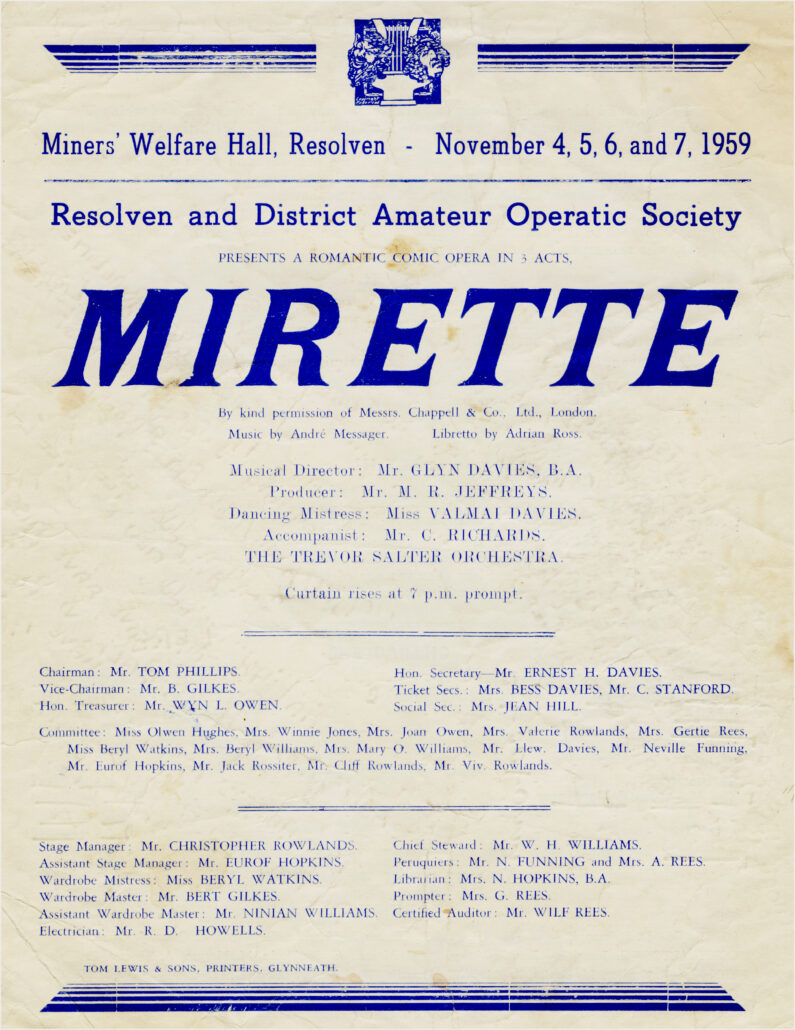
…………………………………………………………..
Mr André Messager was a French composer and organist. His operettas achieved popularity in France and the UK. He was born in Paris in 1853 and died in 1929-between 1890 and 1926 he produced 14 operettas. He wrote in a light elegant style that was characteristically Parisien with romantic plots and elaborate dancing routines. Mr André Messager along with Lehar and Strauss it is said contributed to the evolution of light operettas filled with gaiety and charm, into what is now called musical comedy.
………………………………………………………..…

Before the first night one of the main characters taking part Mrs Betty Davies developed tonsillitis and was unable to take part. However one of the chorus Mrs Nesta Hopkins stepped in with no rehearsal for the first and second night. Thereafter, Mrs Betty Davies recovered enough to be able to play on Friday and Saturday.
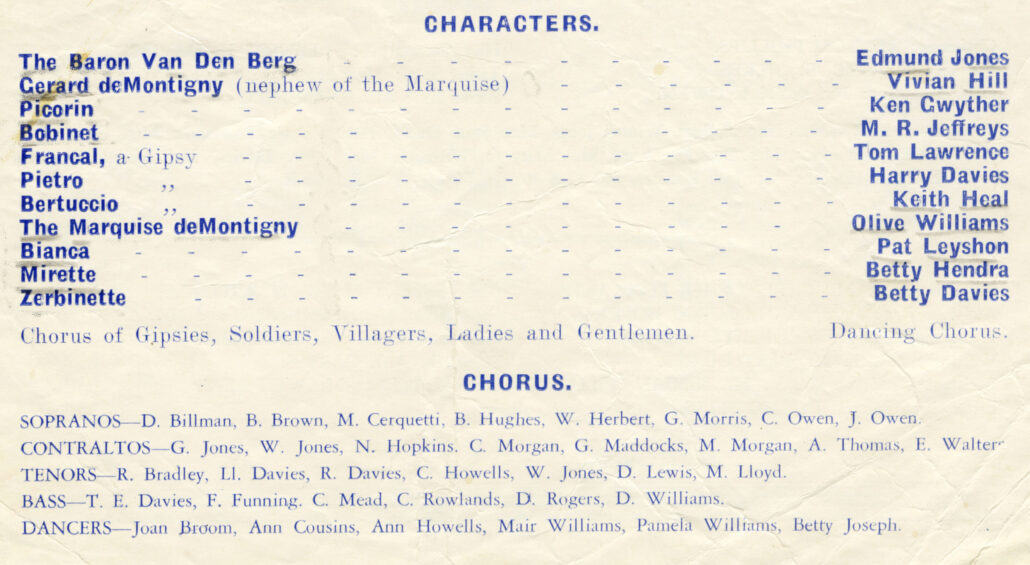
The Finance and Administration Section are a vital part of any Organisation. Even with many unpaid volunteers, the cost of staging a production in Resolven in the 1950’s was approximately £600 equivalent today, to a staggering £16,000. It must have been an extremely difficult task to make a profit to continue or to break even each year. Resolven is a small village and it is admirable and amazing that Resolven & District Amateur Operatic Society were able to carry on performing for so many years.
~
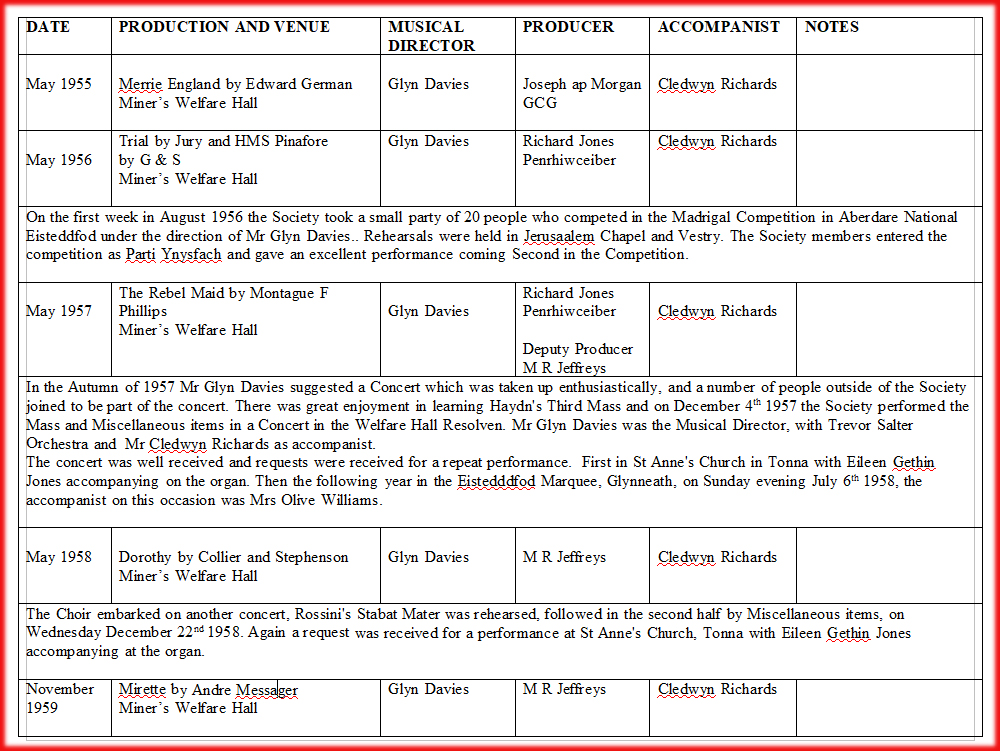
It’s true to say that the Society at this time was enjoying a period of positivity and success, and with a new decade approaching, the Society looked secure for the future.
~ ~
Some information taken from ‘Resolven Operatic Society’ – ‘A History from 1925 ~ 1976’ by Nesta Hopkins with additional information from Owen & Christine Davies. Compiled by Lorna & Hugh Lewis.
~ ~ ~ ~
/to be continued

